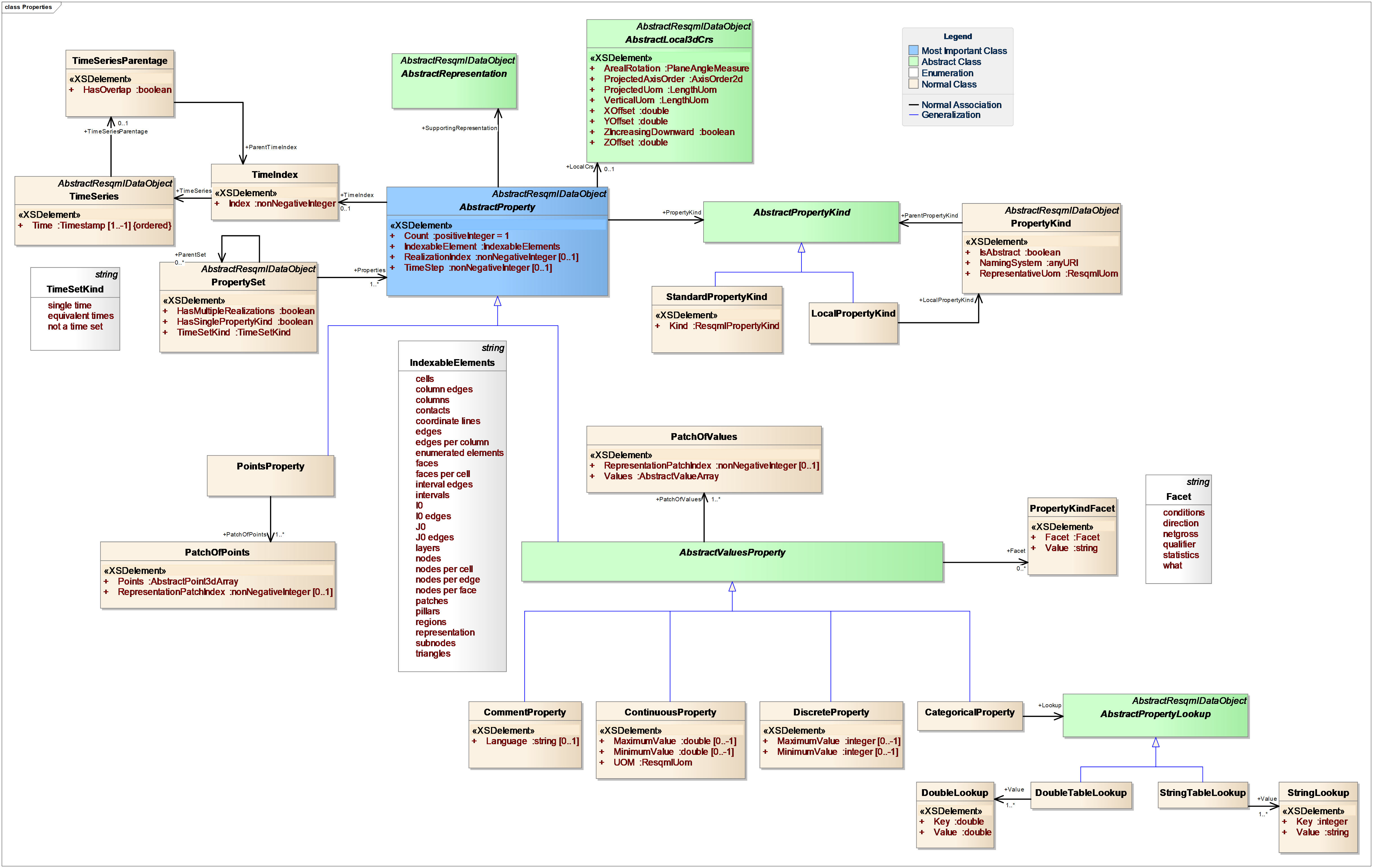8.1 Overview of How it Works
| Topic Version | 1 | Published | 09/11/2015 | |
| For Standard | RESQML v2.0.1 | |||
A property is a group of values (array of values) at different locations in the model. Inside a single property, each individual value is attached to a single type of element in the representation—either its topological elements, such as nodes or cells, or bigger elements such as the entire representation or large parts of it, through subrepresentations. For more information on representations, see 6 Representations (Shared Concepts) .
Each property is also associated with a single property kind, which provides global semantics about the meaning of these values (for example, porosity, permeability, saturation, etc.). Properties can also be associated with facets, which provide additional context for the values. For example, RESQML has a facet for condition of acquisition, indicating if a temperature or pressure value is a surface reading or a reservoir reading (for more information, see 8.2.2 Facets ).
It is common in subsurface/earth modeling workflows to follow the evolution of some properties through time or to consider them together as a group of properties. Each property inside the group can be attached to the same or different representations and the same or different property kinds. To capture this information, RESQML provides the notion of:
Each continuous property is associated with a unit of measure (UOM) providing the context for individual values. However, a property’s UOM must be compatible with the UOM of its corresponding property kind (see 8.2.1 Property Kind ). Each property kind should be derived from a given quantity class (in the Energistics common schema; see 4.2 Energistics Common Technical Architecture (common) ).
NOTE: The Energistics UOMs are extensible for property value and property kind. To specify a UOM not in the Energistics UOM standard, specify the property’s UOM as "Euc" (a place holder value). Then use ExtraMetadata, which is a top-level object component, to specify "Uom" as the Name, and the UOM symbol (such as "barns/electron" or "s1/2") as the Value.
